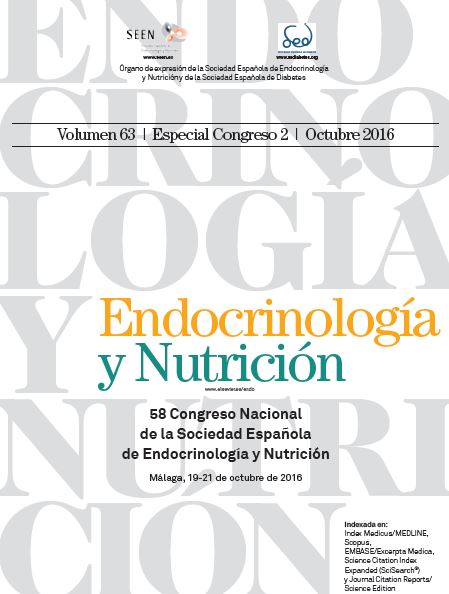5 - CD5L decreases macrophage TNF secretion and enhances foam cell formation under high-glucose conditions
aDepartment of Endocrinology and Nutrition. Health Sciences Research Institute and University Hospital Germans Trias i Pujol. Badalona. Centre for Biomedical Research on Diabetes and Associated Metabolic Diseases (CIBERDEM). ISCIII. España. bInnate Immunity Group; Health Sciences Research Institute Germans Trias i Pujol. Badalona. Centre for Biomedical Research on Liver and Digestive Diseases (CIBEREHD). ISCIII. España.
Introduction: Cardiovascular disease prevalence is very high in patients with T2D, but the underlying mechanisms are incompletely understood. The macrophage is a key cellular player in the atherosclerotic process. Both macrophage scavenger receptor CD36 and its ligand CD5-Like protein, actively participate in the molecular events that lead to plaque formation in atheromatous disease. The main goal of this study was to determine the role of CD5L in the homeostasis of macrophages under hyperglycemic and atherogenic conditions.
Methods: Two sources of macrophages were used, namely, THP1 cells and monocyte-derived primary macrophages, purified from peripheral blood from healthy, non-diabetic donors. Macrophages were cultured in normal (5 mM) or high (15 mM) glucose concentrations, and stimulated with bacterial lipopolysaccharide (LPS) and oxidized-LDL (ox-LDL). The ability of CD5L to modify macrophage secretion of the pro-inflammatory cytokine TNF was measured by ELISA. Moreover, CD5L effect on macrophage ox-LDL uptake and foam cell formation was assessed by flow cytometry. Expression of relevant receptors for oxLDL uptake (CD36, SRA) and cholesterol efflux (SRB1, ABCA1, ABCG1) was assessed by real time qPCR analysis.
Results: High glucose induced a pro-inflammatory TNF response in THP1 macrophages and in primary macrophages that was inhibited by CD5L. Moreover, high glucose enhanced ox-LDL- uptake and foam cell formation in THP1 macrophages, which was further increased upon CD5L expression. Real-time qPCR analysis showed that mRNA levels of scavenger receptor CD36 was significantly higher in macrophages expressing CD5L, and further enhanced under high glucose conditions; SRA mRNA was higher in macrophages expressing CD5L independently of glucose condition while the mRNA expression of reverse cholesterol transporters such as SRB1, ABCA and ABCG is under analysis.
Conclusions: Taken together, our data support a key role of CD5L in suppressing the pro-inflammatory and enhancing the pro-atherogenic effect of hyperglycemia in macrophages. This work was financed for European Society for the Study of Diabetes, ESFD.





